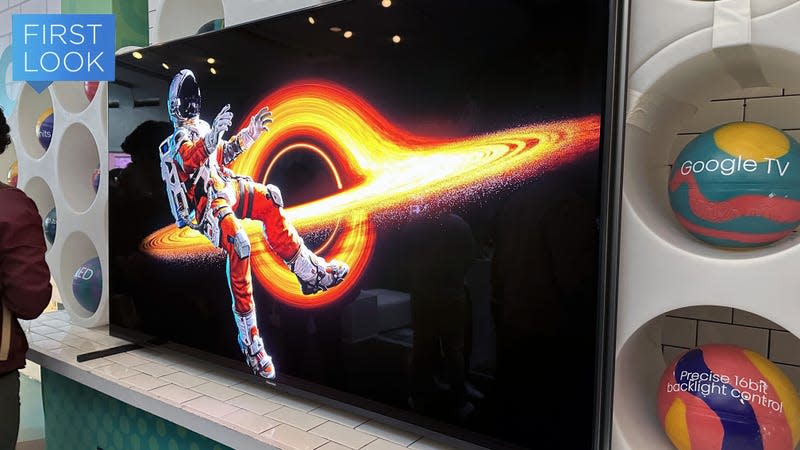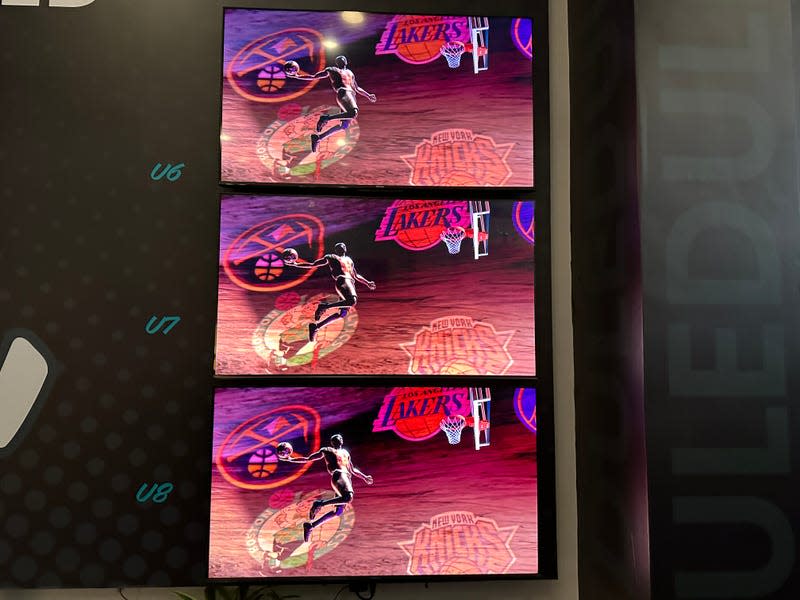Hisense’s Latest ULED TV Wants to Blow Out Your Eyeballs With Extra Brightness

Just when we thought we’d already seen all of what 2024’s mini-LED TVs had to offer, Hisense finally gave us the chance to look at the new pinnacle of its ULED displays, the U9N. It’s a TV that’s desperately trying to thread that fine needle between ultra-premium and upper mid-tier, but all wrapped up with a bow thanks to the whopping 5,000 nits of stated peak brightness. Is it a contender? Possibly, so long as you have a fat enough wallet to drop the $2,999 or $3,999, respectively, for the massive 75-inch and 85-inch screens.
Along with that brightness, the U9N 4K QLED TV boasts more than 5,300 local dimming zones. It’s big and bright and, most importantly, colorful. It supports Dolby Vision and HDR 10+, which certainly gives it a slight edge when comparing it to Samsung’s QN90D 4K NEO QLED ($3,300 at 75 inches) which still only supports the company’s in-house brand of HDR.
To top it off, the TV supports a 144 Hz refresh rate, which should be enough for Xbox Series X or PlayStation 5 running at 4K. Hisense is promising the TV is going to get the AI enhancements from some of its flagship, ultra-premium TVS, namely the 98UX QLED and 110UX QLED (which, you can guess by the name, measure upwards of 100 inches), with the company’s own Hi-View Engine X. What that means in practice is likely very, very minor visual improvements, but it might be enough to truly set it apart from the other TVs in the same lineup.
Gizmodo got to see the U9N in person, but we didn’t have a chance to play with the settings or do anything more than watch a few clips scroll across the screen. Sure it looks bright and beautiful, but just like at CES, we didn’t really get to put the TV through its paces outside an ultra-controlled environment. However, saying that I was still impressed with the overall brightness and anti-glare ability of the TV considering the space we were in definitely wasn’t the best it could be for a viewing experience.

I personally appreciate the speakers built into the sides of Hisense screens for those who just can’t be bothered with a soundbar. Sure, it has a 4.1.2 multi-channel audio setup that we would want to test ourselves, but it’s fair to say the U9N is continuing the legacy of Hisense’s strategy of presenting rather good TVs that cost a fair bit less than others like Sony or Samsung.
Compare all that to the U6N, U7N, and U8N. The latter two TVs are also promising some of the same AI features, though with a lower peak brightness at 3,000 nits. They all support WiFi 6e and the built-in Game Mode and Game Bar features.
At least on paper, the U9N seems like it’s trying really hard to offer a premium experience with a bit less hurt on your wallet. Take for instance Sony’s new Bravia series which caps off with the ultra-high-end mini-LED Bravia 9. At 75 inches, the QLED costs $4,000 with claims that the TV is the brightest screen the company has ever produced. However, we still don’t know the exact stats for just how bright that really is, though the Bravia 9 features some pretty wild driver technology with an incredible amount of local dimming potential. If Hisense can match these other TV manufacturers in display quality and still maintain that price point, it will certainly make a case for itself in a very crowded QLED market.
The U9N should be available sometime this summer on Best Buy’s website.

